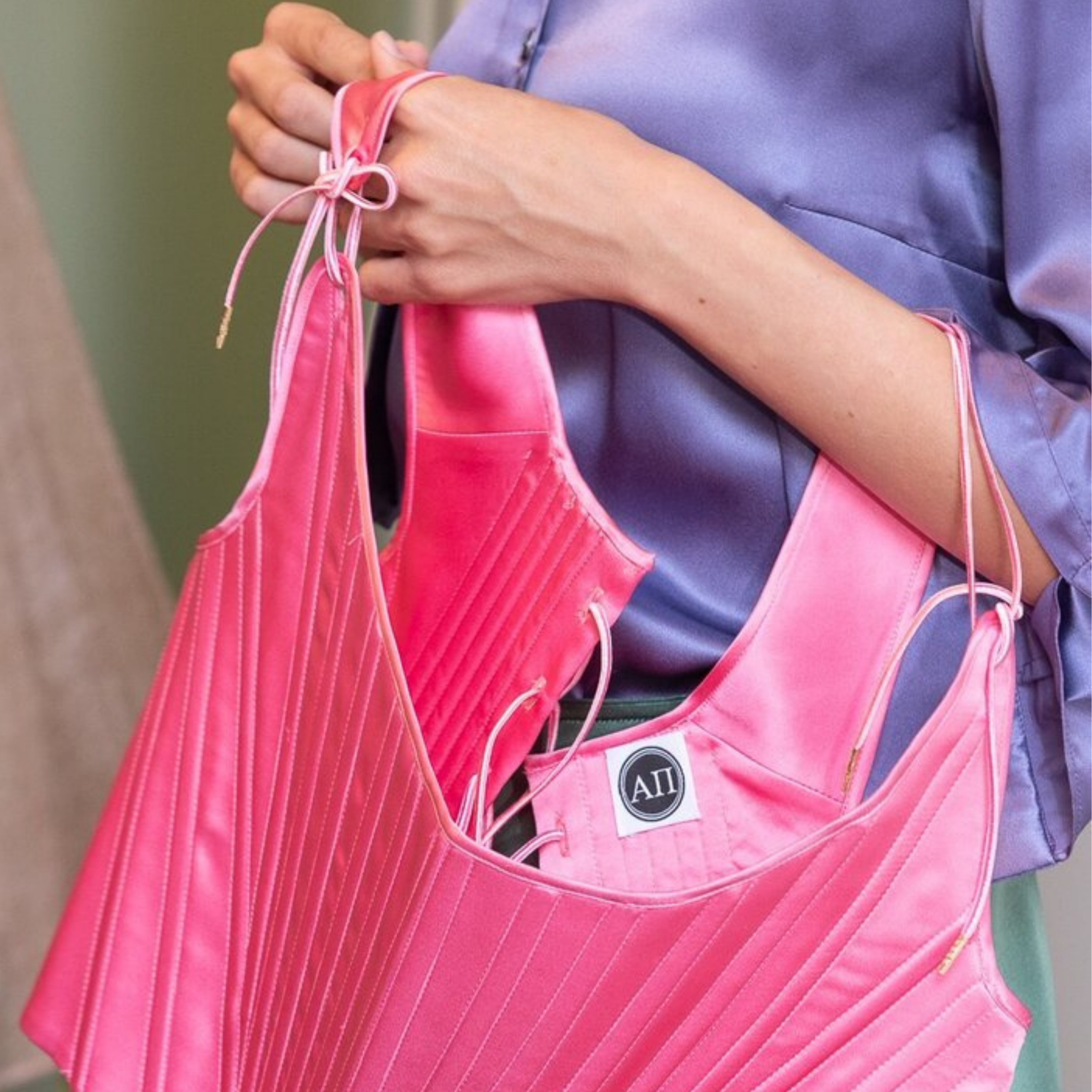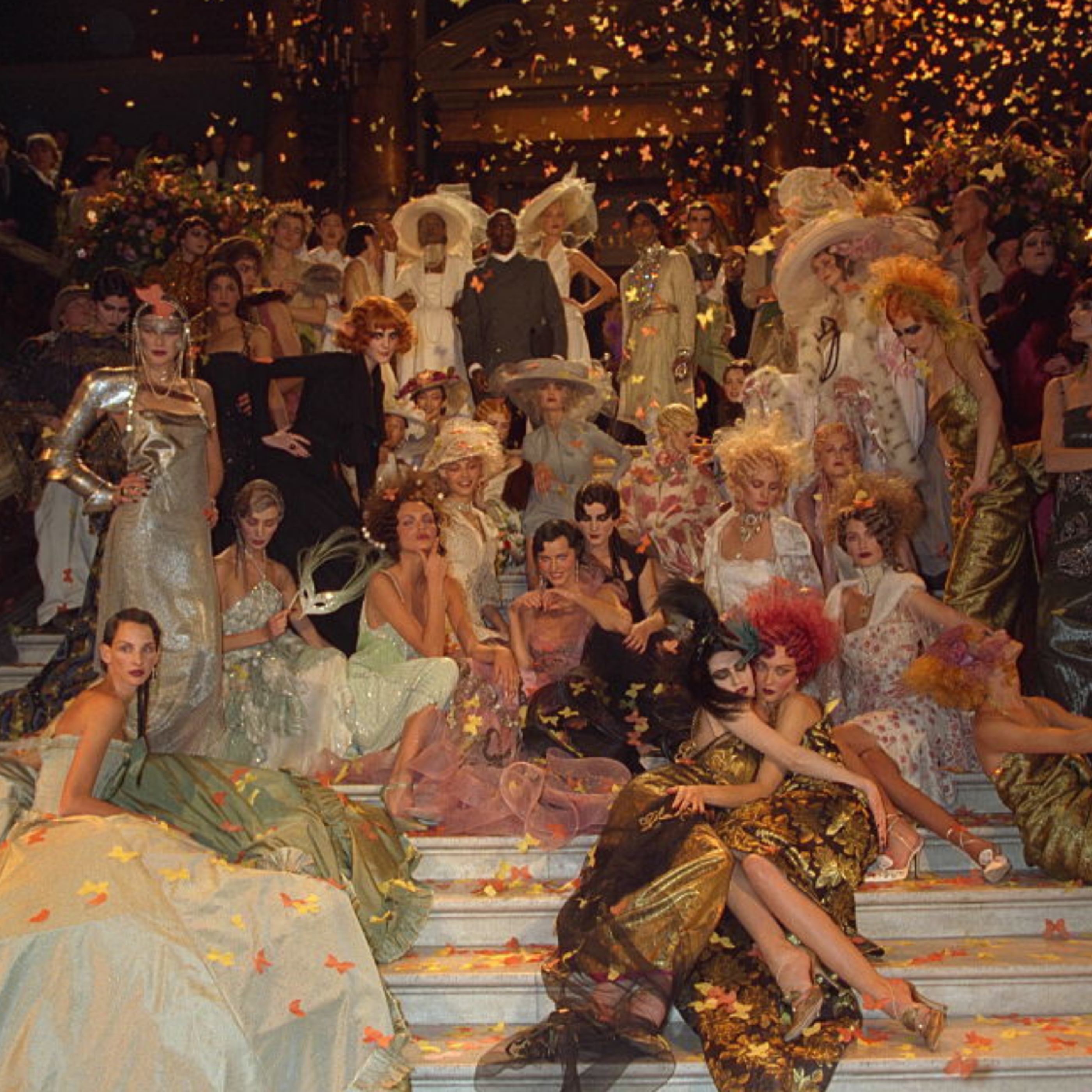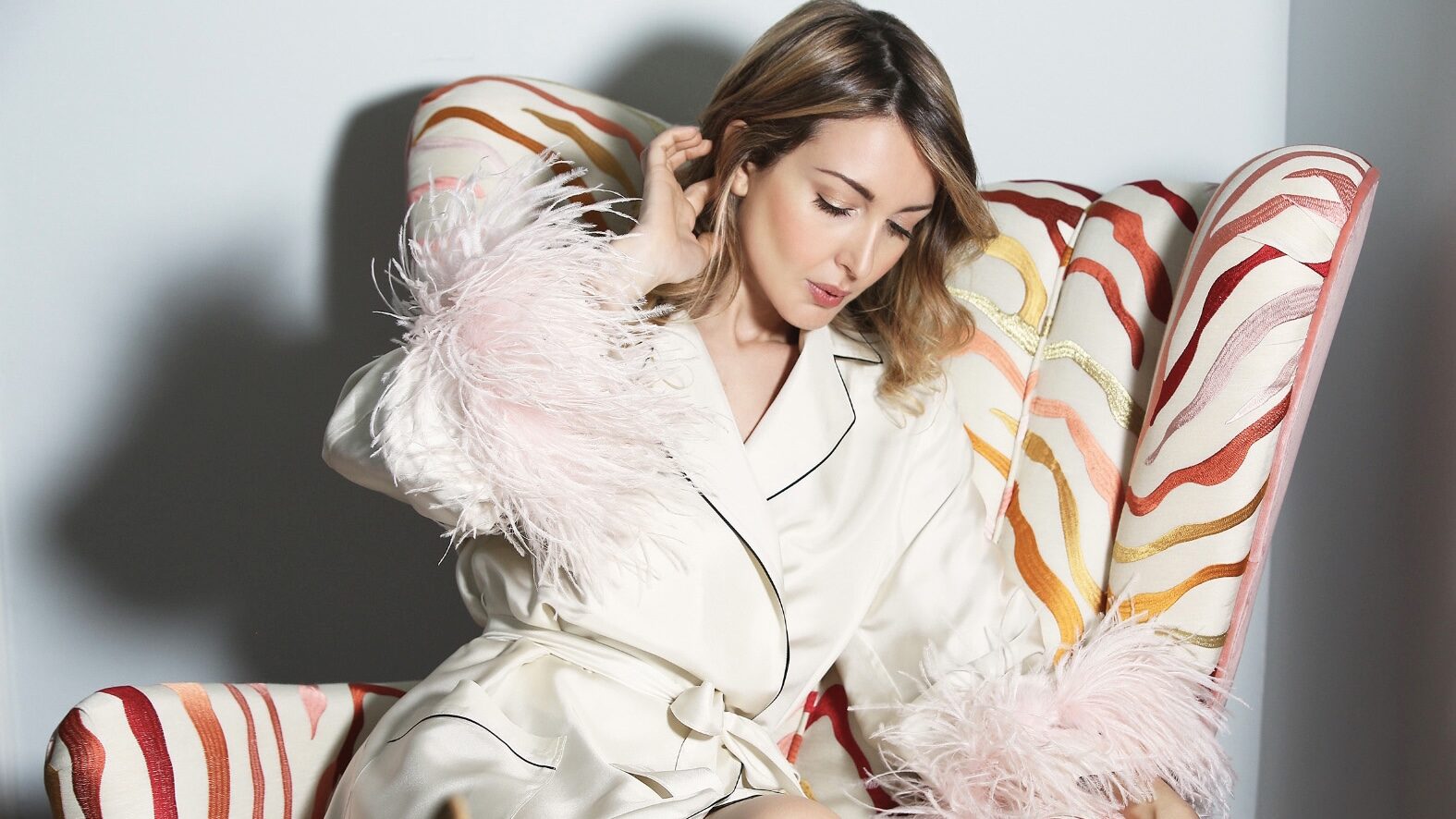Le Rendez-Vous avec Alice Pons
Our new Rendez-Vous opens the curtain in an old-time ambience of corsets, white wigs, wasp waists, court pomp, gold spoons, and precious sweet sticks, the special ingredient of a secret recipe à la mode that hides curiosities and memorable historical events.
Among the mannequins, fabrics, embroidery, and a slice of retro cake we have told you so much about, we have the pleasure of introducing Alice Pons, fashion designer and founder of the eponymous brand Alice Pons Womenswear, to find out all the exciting facts about the corset: the most iconic and feminine garment in history.


Good morning Alice, as true lovers of bon ton and the distant eras when laces reigned supreme, we are curious to hear the delightful tale of the history of the corset. Its year of birth, the inventor, who introduced it as a new wearing accessory, and what uses were made of it.
Alice – The corset has a long, intricate, and highly controversial history. It has changed name, shape, and use incessantly for nearly five centuries. This particular item has been worn continuously from the 16th to the 20th century in the Western world. As early as 2,000 B.C., Cretan women had adopted a kind of corset that left the breasts uncovered and emphasized the silhouette, hips, and chest, to make the body more “desirable”, while Greek and Roman women wore strips of leather under their tunics to thin the waist. It then made its appearance again many centuries later, in the 15th century, often with a corrective function, worn by men as well. But it was in the seventeenth century that it triumphed in fashion, stricter in the Court of Spain, garnished with satin, silk, and lace in France.
The first corset, on the other hand, was introduced by Catherine de’ Medici in France in 1500; it was elongated in shape, like an inverted cone, was worn under clothes, and dresses were modelled over it, with long sleeves and pompous skirts, supported by the hooped metal frames that were attached to the waist of the corsets. From that time on, the corset was considered an “indispensable item of clothing for the beauty of the female figure” to such an extent that Catherine banned “wide-waisted” women from entering the court!
While in the eighteenth century the corset was still seen as an essential element of intimate apparel, it was not until after the Enlightenment, a period that affirmed the need for a free, more agile, and natural body, that the corset first experienced an eclipse and then thirty years of total disappearance around 1790, at the same time as the French Revolution, which marked the end of courtly pageantry and ushered in a new era of dress, namely the neoclassical style. With the Restoration, however, as well as the hairpieces, their use was revived, so that during the nineteenth century, the corset fashion became increasingly intrusive and exaggerated. It seemed to disappear with Poiret’s exotic gowns or Chanel’s feminist crusade, but it triumphed again with Christian Dior’s famous New Look in 1947 as a functional element to enhance hips and cleavage, only to disappear again a few years later.



Reviewing the history of the corset, we imagined we were in the court of the king of France, who was in charge of its manufacture?
Alice –If you think that nineteenth-century fashion provided for women a dress for every occasion: from home, garden, visit, carriage, walk, travel, ceremony… you can only imagine the amount of corsets that had to include an elegant wardrobe of a lady at court. All corsets were made by hand, often in the court itself, or by seamstresses specialized in corsetry, the only ones able to sew these complicated models. Corsets were created by overlapping several layers of fabric, stiffening the structure internally with glues and sewing channels into which the bones, typically of wood, horn, ivory, metal, or whalebone were inserted. Once a rigid structure was created, the corsets were laced tighter and tighter thanks to a system of crossed strings on the back and sometimes even in front.
We have often wondered about the difference between corset, bodice and bustier, essential for our delicious old-time looks. Could you show us the different features?
Alice – Although these terms are now used indiscriminately, between a Bodice, a Girdle, and especially a Corset there are substantial differences that make them very different from each other. The first to emerge was the corset, a garment of women’s intimate apparel in close contact with the body. There are various ones on the market today so that they can also be worn as outerwear; an example of corsets for outerwear is my own!
Essential ingredients of the corset: three layers of non-elastic fabric, closure with laces with eyelets, splints … many bones, in resin or steel that partially or totally cover the structure. The corsets, well made, are commissioned to measure from expert tailors or from leading fashion houses expert in haute couture. Typically elegant, ideal for red carpet looks, met galas, ceremonies and weddings, these garments are often muted, complete streetwear outfits, combined with a pair of jeans or over an oversized summer shirt.
An evolution of the corset is the bodice, for external use, of variable fit but never excessively wide, because it always follows the shape of the bust. It can be off-the-shoulder or low-cut, even with sleeves or braces. Bodices are very common and are sold in sizes and come in a variety of shapes. Zippers, hooks, buttonholes, buttons, and satin ribbons are usually used to fasten bodices, in a wide variety of shapes, types, and solutions. Two fabrics are typically used, an outer and a satin lining.
When we speak of a “Bustier” instead, we mean a garment for both underwear and outerwear also called a bustier. Bustiers usually have no sleeves, at most small suspenders that in some cases are included for convenience and additional breast support. What distinguishes the corset from a bodice is the use of “splints,” and precisely to make the corset as close as possible to the body and thus highlight its shape, different types and sizes are included. To date, the most widely used splints are those made of the ridgeline, made of polyester and also called “support splints,” which allow all kinds of movement while maintaining the rigidity necessary for the fit and shape of the model.



Baked patterns, precious fabrics, and embroideries are indispensable ingredients for custom sewing fine and unique accessories such as corsets, there have been several. Which ones are the most iconic and why?
Alice – I would like to illustrate some pieces that should be considered iconic, not always because of the preciousness of the fabrics and embroidery, but because of the time and dedication with which they were constructed. As already mentioned, corsets in the 18th century were to be considered women’s underwear with two functions: hygienic and structural. The corset formed a hygienic barrier between the body and clothing.
In the 1970s, Vivienne Westwood began using corsets as part of her historicist punk aesthetic; she imagined that her corsets, light and elastic, empowered women rather than constraining them by becoming a symbol of freedom of personal expression. As for corsets iconic for eccentricity and innovation, however, Thierry Mugler and Jean Paul Gaultier, geniuses of excess, colour, exaggerated shapes, and geometries, brought corsets back to life by creating iconic garments that would make costume history in the 1980s and 1990s, with waves of hourglass shapes and wasp-like waists. Alexander McQueen also made use of the iconic corsets and busts revisited, sometimes even more structured, to achieve runway looks of unprecedented drama. Not to mention the looks of John Galliano and Christian Lacroix, who proposed yet more corsets, decorated with draping and lace, dreamy shades, and references to older fashion with pompous skirts and lavish petticoats. Stella McCartney, Yves Saint Laurent, Tom Ford, and Balenciaga’s Nicolas Ghesquière experimented with corset-like tailoring in their creations, sometimes layering corsets over garments rather than under them, from undergarments into outer garments.



Dreaming between runway looks and iconic designers, made us want to take small bites of interesting little stories that fill our hearts with joy. Tell us anecdotes about this much-talked-about piece!
Alice – Many still think that corsets were real cages and instruments of torture for women, but few know that the same objects were also accomplices in incredibly romantic romances, whose role was to protect the body and one’s belongings, like a safe. Even back in the day, everyone had their secrets to keep, and what better object than a corset full of splints to be secretly engraved and admired, with many respective little pockets that concealed these precious things from the rest of the world?



Love and creation are linked by an indissoluble thread, on that very subject, since it is still about love, let’s talk about Alice Pons Womenswear. Cheer us up by letting us know the beginning of your romantic story with this women’s garment, the family art, the birth of the idea, and this passion of yours that has become your career.
Alice – As a child, I used to help my mom, also a designer of her eponymous clothing line, in choosing materials, colours, and patterns for her handcrafted garments, and she made me a part of creating the patterns and choosing the cuts of each dress. Seeing all of this at a very young age definitely contributed to my decision to pursue a career in the fashion industry, but more importantly, it gave me the courage to set out on my own as a young entrepreneur. As for my special passion for corsetry, it all started almost by chance or destiny. I was attending London College of Fashion, a fashion university when in my final year for my final collection I found myself designing my first corset. That specific pattern, which soon became my hallmark, was inspired by a Rococo-era corset found in an archive at Central Saint Martin’s; a one-of-a-kind piece that I was completely enraptured by. I fell hopelessly in love with the history of this particular item, its solid structure and versatility, and the impressive hourglass effect it could achieve on all-female bodies, of all shapes and sizes.




A delight for our gourmet palates à la mode. Do you personally take care of the fabric selection, creative ideas and prints, and/or embroidery? On average, how long does it take you to create a corset?
Alice – For my corset collections, I always take inspiration from historical models; the process of making a corset always begins with thorough research of the original shapes in different historical eras and then follows a complete modernisation of the structure to make each piece versatile and suitable for the needs and shapes of the modern woman. I design all corset patterns myself along with skirts, pants, shirts, and dresses, choosing cuts and patterns that succeed in bringing my aesthetic to life. I look for the highest quality fabrics, preferably sustainable and organic, typically Italian silks, linens, and cotton. Sometimes I collaborate with other brands to create unique prints or dyes to make each piece even more special and recognisable in a society bombarded by fast fashion. I like to stand out and go against the flow, favouring a slow fashion approach and offering high-quality, immortal and unique pieces.
The models that take the longest time to make are definitely the corsets, the manufacture of which varies from 15 to 20 hours of work, not to mention that all products are also custom reproducible, to make everyone experience a true time journey, in which the person remains the focus for the creation of the ad hoc garment, and his or her tastes and preferences are the priority.


If you had to imagine us, Gourmode addicts, in the past, what historical period would you have us live in and what corsets would you choose for us?
Alice – For the lifestyle gourmode, lovers of good taste, lovers of beauty and etiquette, I thought a nice time journey with 17th-century stage would not disappoint. Among sumptuous fabrics such as velvet, silk or brocade and lines of women’s dresses that are vaporous and seductive. I imagine you at the French court in the transitional period from Baroque to Rococo, characterised by the exuberant and excessive spirit that invaded Versailles and Paris and from there conquered other European courts.
.



Alice, bewitched by so much elegance and femininity, we thank you with a graceful bow for sharing savoir-faire, fashion and sophistication with us.
And now? Should we turn sketches and historical episodes into reality?
Discover the special selection on Boutique Gourmode and let yourself be conquered by the whole world of Alice Pons Womenswear.
And with a tightly laced corset we say goodbye and let you travel with your imagination!

You may also
be interested in


 Gourmode
Gourmode

